|
|||||||||||||||||
November 2009 Web Edition Issue #3 |
|||||||||||||||||
| Mondo Cult Forum Blog News Mondo Girl Letters Photo Galleries Archives Back Issues Books Contact Us Features Film Index Interviews Legal Links Music Staff |
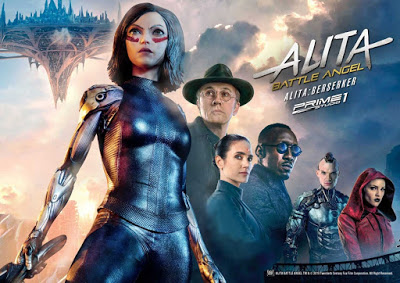
AlitaAs Discussed byJerry JewettManga* is as unknown to this refugee from Ioway as sushi is scarce in Hanlontown, but James Cameron serves as a kind of beacon. In a preview shown at an airing of Cold Pursuit, I learned that Cameron, Robert Rodriguez, Laeta Kalogridis, and John Landau had taken a venerable manga product from Yukito Kashiro and transformed it into movie. Cameron has many credits but Avatar is the item that hooked my attention. Rodriguez’ Sin City likewise impressed me, so I thought any collaboration by them could be pretty good. After soaking up Avatar and Sin City when they came out, I was ready for something else of the visionary/fantasy line from Cameron and Rodriguez. Alita looked like it. At the first showing, on opening night, I scampered in late; how late, I knew not. The movie has a kind of visual beauty that belies its genre as an apocalyptic story. This is an apocalyptic story, and not a dystopic one. As Professor Ryan J. Barilleaux illustrates in his essay in The Kirk Center’s University Bookman, published February 17, 2019, a dystopia is inextricably intertwined with a utopia. A popular propensity to label every negative and ugly story as dystopian, much like the tendency for some to label any political position with which they disagree as Fascism, is an abuse of the language, of the sort to which George Orwell would object. Barilleaux quotes Ursula LeGuin, “Every utopia contains a dystopia; every dystopia contains a utopia.” He adds, “Dystopia is not about a failed attempt to create utopia, but—more powerfully—about what happens when such an attempt succeeds.” Alita is an apocalyptic story, not a dystopian one. Iron City, the vast megalopolis where most of the action plays out, is a broken but not ruined place. Many buildings are in decay but the streets are open and wheeled traffic can speed about freely. Ordinary people, cybernetic organisms with a human core, stray dogs, and well-programmed robots all engage or dominate on the streets, where a kind of fruit-stall-vendor market works out. The great darkness inherent to Blade Runner is absent. Star Wars prepared viewers to accept almost any animated being, so there is little challenge to the imagination here. 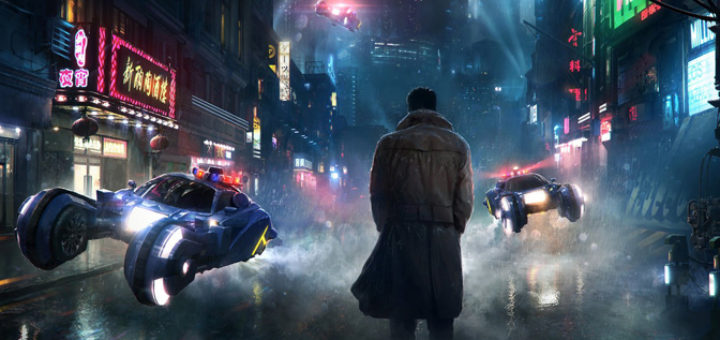 Blade Runner 1982 In similarity with District 19 and Elysium, there is a superior place “right up there over our heads,” where great privilege lies and from which rulership flows. Until the end, we see only the bottom and the outside of Zadem, the Uber-City. Goods manufactured in Iron City flow up there while waste and rubbish are jettisoned down to a middens within Iron City where scavengers seek trover. One such scavenger is Dr. Dyson Ido (Christopher Waltz), a physician and care-giver to the cybernetic population of Iron City, albeit also a man whose quest for spare parts leads him to felonious ventures by night. In rummaging the middens below Zadem, he finds an intact head-and-torso of a cyborg in a state of deep hibernation, so to speak. He imagines or perceives something remarkable about this young female and takes her to his home and clinic. There, he outfits her with a robotic body originally devised for his own wheel-chair-bound young daughter, the original Alita. His Alita died in a drug-seeking attack from a crazed cyber-patient, leaving the prosthetic body unused for years. His physician wife, Dr. Chiren (Jennifer Connolly), left him after the murder of their daughter, and took up a professional (and more) relationship with Vector, a Machiavellian power broker character played by Mehershala Ali. Vector claims to be an agent of or intermediary for Nova, the unseen and distant Ruler of Zadem, and able to transport elect individuals up to Zadem. Vector and Dr. Chiren work as tuners for cyborgs competing in a potentially lethal roller derby style contest called Roller Ball, which is the principal entertainment for Iron City’s denizens, a “bread-and-circuses” style of venue. Vector claims that he can transport ultimate winners of some of the contests to Zadem, which is understood by Iron City folks as their in-this-life analogue to Heaven. When Dr. Ido’s ministrations match the heroine Alita with the prosthetic body he made for his daughter, she reanimates and wakes up in an amnesiac blur, little knowing who, what or where she is. We must recall that this movie is an abstraction from and adaptation of some six volumes of Manga cartoon-craft, so not every dot is connected here and a good bit must be taken on faith. 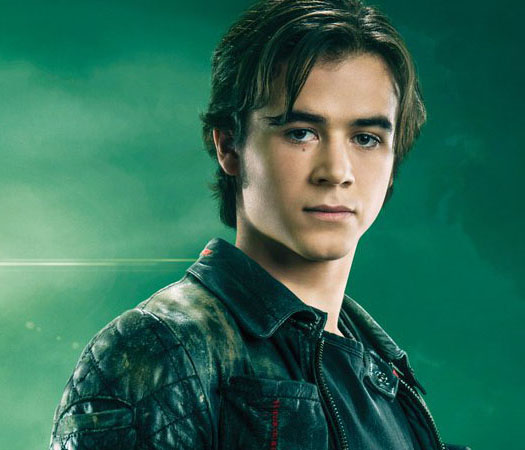 Keenan Johnson as Hugo in ALITA Alita appears to be in her late teens, though the actress Rosa Salazar is 33; the WETA transformation process accounts for her age loss. Alita gets outdoors, sees the Iron City street society, and is befriended by Hugo (Keean Johnson). Hugo is a combination courier, street urchin, amateur Roller Ball player, and criminal harvester of cyborg “parts and accessories,” obtained gang-style by waylaying victims at night and overcoming with superior force of numbers. Despite his beatific relationship with Alita, he is revealed as equally morally ambivalent and occasionally as morally bankrupt as many another Iron City denizen. There is no police force, but for crimes such as murder, a crew of bounty hunters are authorized to - and do - track down the murderers and similar criminals; and dispatch them for rewards. In one street scene, Dr. Chiren observes and confronts Alita, recognizing the body that was originally devised for her own daughter. She seeks out Dr. Dyson and suggests they throw in their talents to really excel in the lucrative cyborg-preparation business involved with Vector and the Roller Ball franchise. He disdains this bid, so they resume their prior acrimonious regard for one another. Meanwhile, Alita is slowly growing in her consciousness and her recollections of her prior existence. She realizes she has capacities that she has not manifested in action yet. She gets into conflicts with the scum-life underworld of Iron City society, in vicious combats that show her to be far more than she initially appeared to be. Since this is not a plot summary, much will be left out, so the viewer can be appropriately surprised at both foreseeable and unanticipated scenes and events. In the only out-of-Iron-City jaunt in the story, Hugo and some friends take Alita to a place where the ruins of an alien space ship are half sunk in a clear-water lake. The friends note that the craft is a relic of URM, the invading United Republics of Mars. We thus see that the alien attack of URM was the start of the Great War and The Fall, though the gap between The Fall and the rise of Zadem goes unexplained. Alita senses a resonance in the alien craft, takes a deep breath, enters the water, and climbs up into the command center of the craft. There she is able to manipulate controls. Doing so reveals a stunning prosthetic body, which has an almost magnetic attraction for her. She brings it out and asks Dr. Ido to transfer her to it. He stubbornly refuses, noting it is alien technology and not appropriate for her. He finally tells her it is a URM artifact, powered and programmed to engage in Panzer Kunst, a long-lost cyborg or mechanical warrior art, of incredible power, and the last such weapon of that design. In the outcome of one vicious battle with one of the worst street characters, she is ruined and reduced back nearly to the minimal bits that Dr. Ido found when he discovered her. With her original body wracked to ruin, Ido compassionately installs her in the Panzer Kunst body. With this, she recognizes herself as a true Warrior, meant to combat evil against great odds. The event is like a transfiguration or re-birth for her. 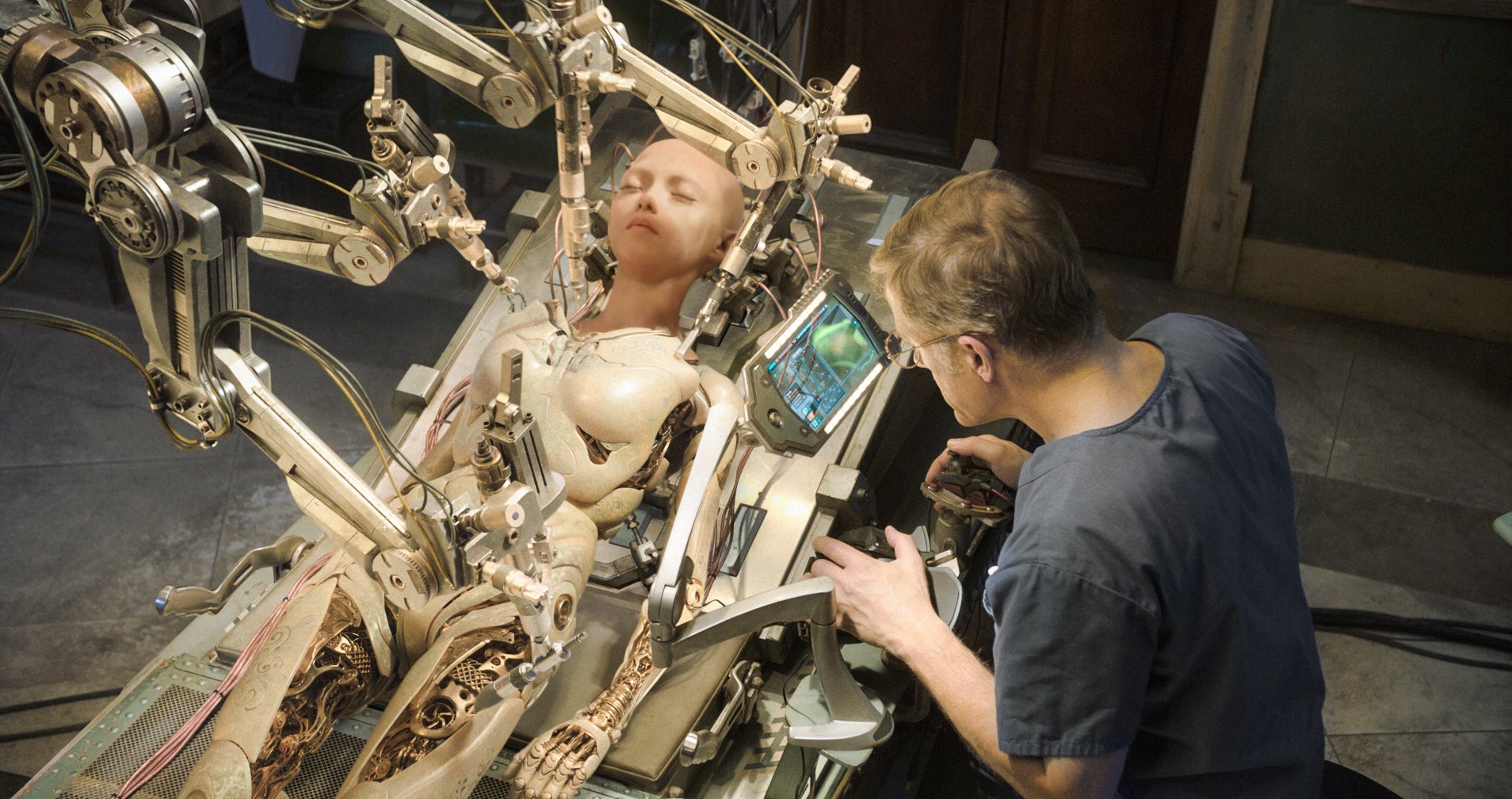 Dr. Ido does his thing.
This transformation is physical and more. In the original body, even when well clad, she looked like a stick figure, an anorexic teen. In the Panzer Kunst body, she looks like a strong healthy athlete with powers of maturity. This plays out in her further adventures in the movie. Scott Mendelson, writing in a 2-28-2019 Forbes article, speaking of this movie and its ilk, noted that the days of star power alone or special effects alone, or even both of them together, no longer suffice to fill seats in theaters. He notes that the successful movie of the Avatar sort now has to have not merely stars and spectacular special effects, but also character. The Alita team took Mendelson’s perspective into account in putting this movie together. Character is present. The WETA contingent engaged what must be hundreds of artisans and craft persons to create this movie, yet Ms. Salazar was assured that when she saw herself on film, she would see her expressions and acting, rather than a WETA interpretation. When she first saw a scene with her in it, she reputedly cried because the image so well captured her acting. At an interview, she said, ‘They are engineers but they are poets, too.’ She may have been the least known star in this movie at the start, but the movie will surely elevate her at least one complete rank in the Hollywood hierarchy. A lot happens in this film. Wondering what I missed by coming in late, I went back for a second viewing. I see I lost only 4-5 minutes off the front end, hardly enough to justify coming back in terms of continuity alone. But watching it the second time, I saw things that were there the first time, but I could not take it all in. Like in the best of Louis L’Amour’s Western novels, we see the evolution and degeneration of character among various cast members. There are several love stories, of both romantic and family nature. Themes of selfless sacrifice and redemption play out. There are quiet or contemplative moments, and pitched battles, in a nice balance. I don’t see, let alone review, every Strong Girl/Girl Up movie. I missed GI Jane and Atomic Blonde on purpose, though I liked Hannah. But Whale Rider cried out to me (see review in MC#1), and on a similar level, so does Alita. 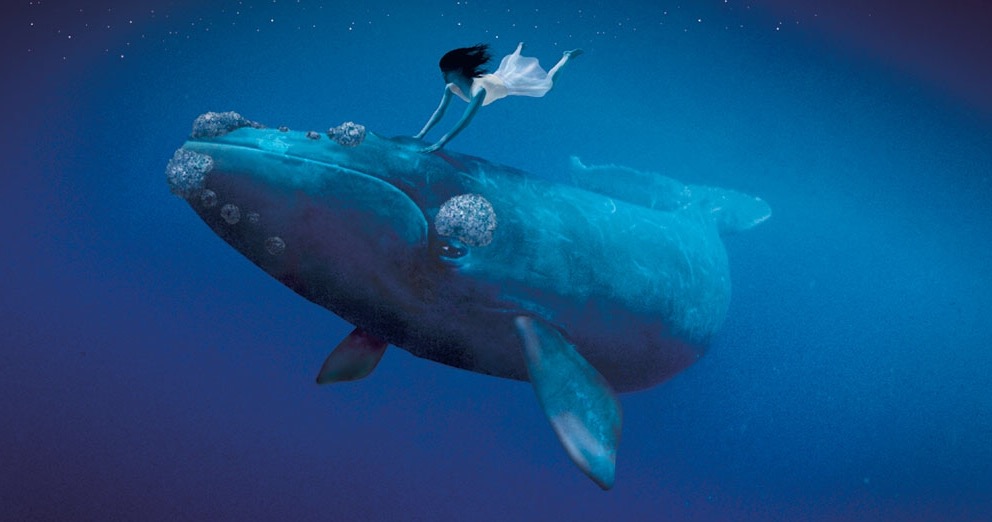 Paikea does HER thing - WHALE RIDER 2002
Whale Rider’s Paikea has an actual father who is absent by reason of his preoccupation with pursuing a European life in modern art. Paikea has to find her destiny without direct paternal intervention. Alita can scarcely be said to have a father of anyone’s knowledge, though she has DNA and is human in a way that Alicia Vikander’s (Ex Machina) Ava cannot be, despite her credible pretense. Paikea is at the lowest end of the technology spectrum, while Alita is at the highest end. Paikea gets her knowledge from a sternly bemused grandfather, while Alita’s knowledge and skills are largely programmed - though her emotions are anything but. And they are real emotions, unlike Ava’s programmed responses. Both characters outdo themselves in times of stressful challenge and show true heroism and leadership as needed. Alita has so many benevolent human qualities that dismissing her as other than human would be cavalier. I am glad I saw this movie a second time, to soak it all in. Edward Norton’s late cameo as Nova piques the interest and we could hope for a second chapter where Alita can confront this Sauron-like mastermind (Vector was the Saruman of the piece, a malevolent being but also a dispensable pawn). I saw it in flat screen rather than 3D and glad of it. I would rate this four stars of five. *Manga Discussed at WikipediA |
||||||||||||||||




